Behind Bars: the Definitive Guide to Music Notation (Faber Edition)
£63.80£76.00 (-16%)
Behind Bars is the indispensable reference book for composers, arrangers, teachers and students of composition, editors, and music processors. In the most thorough and painstakingly researched book to be published since the 1980s, specialist music editor Elaine Gould provides a comprehensive grounding in notational principles.
Behind Bars covers everything from basic rules, conventions and themes to complex instrumental techniques, empowering the reader to prepare music with total clarity and precision. With the advent of computer technology, it has never been more important for musicians to have ready access to principles of best practice in this dynamic field, and this book will support the endeavours of software users and devotees of hand-copying alike. The author’s understanding of, and passion for, her subject has resulted in a book that is not only practical but also compellingly readable.
This seminal and all-encompassing guide encourages new standards of excellence and accuracy and, at a weighty 704 pages, it is supported by 1,500 music examples of published scores from Bach to Xenakis. This is a hardback book, with dust jacket.
Contents:
Section I – General Conventions: Ground Rules
Chords Dotted notes Ties
Accidentals and Key Signatures
Dynamics and Articulation
Grace Notes, Arpeggiated Chords, Trills, Glissandos and Vibrato
Metre
Tuplets
Repeat Signs
Section II – Idiomatic Notation: Woodwind and Brass
Percussion
Keyboard
Harp
Classical Guitar
Strings
Vocal Music
Section III – Layout and Presentation: Preparing Materials
Score Layout
Part Preparation
Electroacoustic Music
Freedom and Choice
Read more
Additional information
| Publisher | Faber Music Limited, First Edition (20 Jan. 2011) |
|---|---|
| Language | English |
| Hardcover | 704 pages |
| ISBN-10 | 0571514561 |
| ISBN-13 | 978-0571514564 |
| Dimensions | 15.88 x 5.08 x 23.5 cm |

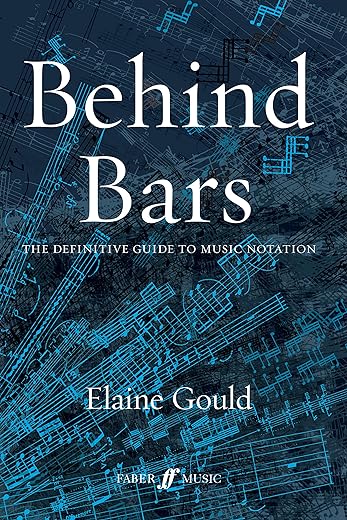
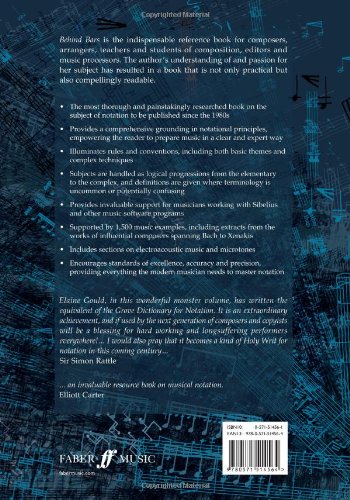
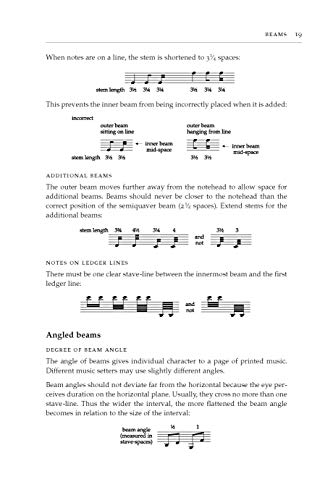


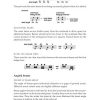
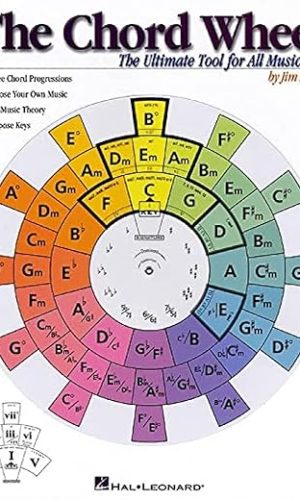

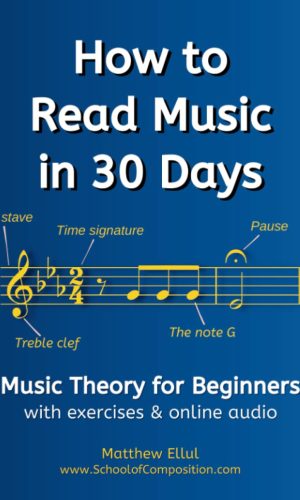

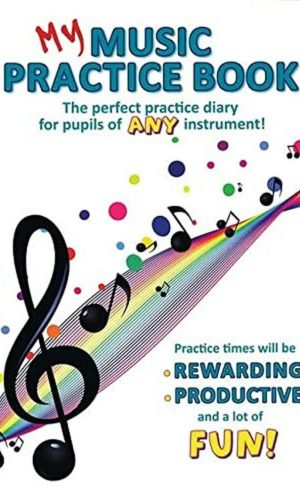
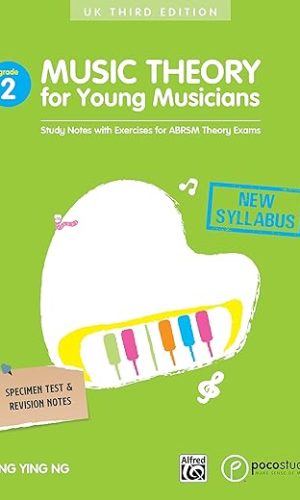
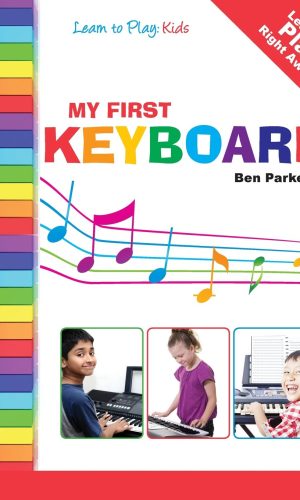
by Blodwyn Pygg85
I have been after a copy of this book for a while but couldn’t afford the hard back, so I was delighted when it cme out as a kindle book.
If anyone else is looking for this, don’t bother with the kindle version. The size of the text on screen is minute and you can’t change it because the pages are images. Even on my 17″ laptop, never mind my 7″ kindle or Samsung 10″ tablet, the text is tiny. I used the Calibre app as well to try and read it, but, although I can now zoom it, the choices are very very limited (fit page, 150%, 200%, Actual size) all of which only show about 1/4 of a page or less.
I’ll be looking for a refund because this is just not fit for purpose.
by Gareth Clemson
I chanced on Behind Bars in a local bookshop but was put off by the price. Yet the desire to acquire it lingered. An excellent price from Amazon made the purchase possible. The aim of the book is to standardise music notation.Truly a composer’s bible. Like all good reference books, it is clearly set out out with cross references included in the text rather than the need to use the index. As a string player, I’ve so far dipped into the section on writing for strings. I particularly like the direct and clear language; the writer shows an awareness of music seen from the performer’s point of view. Examples of graphic contemporary notation are included. This a good thing but I wonder if ‘domestic’ (as opposed to Publisher) users have music programmes sophisticated enough to include these. Cons? Are there any? Perhaps delving in when time can be better spent doing something else!
by Jorge Conde
This is really a complete reference to music notation. I would recommend it to anyone interested in correct, up-to-date musical notation.
Sometimes it get hard to follow because it contains many cross-references, but on the overall is quite readable (considering the issue). Anyway, a book to have next to you whenever editing scores.
by K
If you’re a composer, arranger, editor or publisher, this is the most useful resource for ensuring the best possible layouts for music that you work with. From basic principles of how to shape notes and markings, through to complex ideas of laying out scores, extended techniques or avant-garde scores, this book will see you through it.
by Geert
a must have for everyone involved in music writing and teaching
by P. E. Holmes
If you ever lay out music for public consumption, this book should be at your right hand. Its exhaustive coverage of issues of musical notation is unmatched anywhere else. Its style is clear and informative. The illustrations (often as helpful “like this” and “not like this”) clarify the points made perfectly. Absolutely indispensable.
by Jaydee207
I wish I had purchased this months ago as I transcribe music composed on manuscript paper into printed format using a well known software. This is the type of reference book that provides all the answers and methods of producing great scores in a standardised way. A lot of illustrations that are useful showing the recommended ways of creating the scores.
by Mike Allen
Authoritative and clearly written. Works well on the kindle app on my iPad – and can be read on the Kindle itself although this does require a bit of effort to change teach size for some examples.